Papers by Christian Miniatura

Physical Review E, 2002
Wave Chaos is devoted to the study of wave motion when the geometrical limit of rays is chaotic. ... more Wave Chaos is devoted to the study of wave motion when the geometrical limit of rays is chaotic. Imprints of ray chaos may be found either in spectral and spatial properties of modes or in spatiotemporal evolution of wave packets. In this paper, we present a thorough experimental and theoretical analysis of field statistics for light propagating in a multimode fiber with a noncircular cross section. This optical fiber serves as a powerful tool to image waves in a system where light rays exhibit a chaotic dynamics. We show that, in the speckle regime, the experimentally measured statistical properties of intensity patterns are well accounted for by a "random Gaussian" hypothesis. A comparison is also made in the case of regular ray motion by using a circular optical fiber. Possible extensions and applications of the tools and concepts of Wave Chaos are mentioned in modern communication technology.
Annales de Physique, 1995
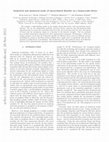
Eprint Arxiv 1211 6606, Nov 28, 2012
We consider a tight-binding model on the regular honeycomb lattice with uncorrelated on-site diso... more We consider a tight-binding model on the regular honeycomb lattice with uncorrelated on-site disorder. We use two independent methods (recursive Green's function and self-consistent Born approximation) to extract the scattering mean free path, the scattering mean free time, the density of states and the localization length as a function of the disorder strength. The two methods give excellent quantitative agreement for these single-particle properties. Furthermore, a finite-size scaling analysis reveals that all localization lengths for different lattice sizes and different energies (including the energy at the Dirac points) collapse onto a single curve, in agreement with the one-parameter scaling theory of localization. The predictions of the self-consistent theory of localization however fail to quantitatively reproduce these numerically-extracted localization lengths.
Physical Review A, 2015
We show that the momentum distribution of a nonlinear matter wave suddenly released with a finite... more We show that the momentum distribution of a nonlinear matter wave suddenly released with a finite velocity in a speckle potential converges, after an out-of-equilibrium evolution, to a universal Rayleigh-Jeans thermal distribution. By exploring the complete phase diagram of the equilibrated wave, we discover that for low but nonzero values of the disorder strength, a large-scale structure -a condensate-appears in the equilibrium distribution.
Starting from a microscopic theory for atomic scatterers, we describe the scattering of light by ... more Starting from a microscopic theory for atomic scatterers, we describe the scattering of light by a single atom and study the coherent propagation of light in a cold atomic cloud in the presence of a magnetic field B in the mesoscopic regime. Non-pertubative expressions in B are given for the magneto-optical effects and optical anisotropy. We then consider the multiple scattering regime and address the fate of the coherent backscattering (CBS) effect. We show that, for atoms with nonzero spin in their ground state, the CBS interference contrast can be increased compared to its value when B=0, a result at variance with classical samples. We validate our theoretical results by a quantitative comparison with experimental data.
On the basis of exact numerical simulations and analytical calculations, we describe qualitativel... more On the basis of exact numerical simulations and analytical calculations, we describe qualitatively and quantitatively the interference processes at the origin of the photonic Hall effect for resonant Rayleigh (point-dipole) scatterers in a magnetic field. For resonant incoming light, the induced giant magneto-optical effects result in relative Hall currents in the percent range, three orders of magnitude larger than with classical scatterers. This suggests that the observation of the photonic Hall effect in cold atomic vapors is within experimental reach.

Aps March Meeting Abstracts, Mar 1, 2004
Multiple light scattering creates mesoscopic coherences in optically dense ultracold atomic gases... more Multiple light scattering creates mesoscopic coherences in optically dense ultracold atomic gases. Considerable interest has been generated by the possibility that at high densities strong localization, in which coherences collapse into localized subradiant excitations, may occur. At lower density, the main observable is the coherent backscattering (CBS) effect. In CBS, the intensity of resonance radiation scattered from the sample shows enhancement in the nearly backwards direction. We report remarkable effects that strongly modify the observed enhancement, and may have impact on studies of strong localization. First, theoretical results display destructive interference in CBS in atomic Rb, reducing the enhancement to less than unity. This surprising effect is due to quantum interference in light scattering, in the polarized effective medium, from nondegenerate hyperfine levels. Second, saturation experiments on the resonance transition in ultracold atomic Sr show that vacuum field fluctuations generate dephasing in multiple light scattering, and reduction in the CBS enhancement. Time-resolved studies show a drastic reduction of the diffusion coefficient and modification of CBS.
We use coherent backscattering (CBS) of light by cold Strontium atoms to study the mutual coheren... more We use coherent backscattering (CBS) of light by cold Strontium atoms to study the mutual coherence of light waves in the multiple scattering regime. As the probe light intensity is increased, the atomic optical transition starts to be saturated. Nonlinearities and inelastic scattering then occur. In our experiment, we observe a strongly reduced enhancement factor of the coherent backscattering cone when the intensity of the probe laser is increased, indicating a partial loss of coherence in multiple scattering.
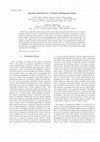
Physical Review E Statistical Nonlinear and Soft Matter Physics, May 1, 2002
Wave chaos is devoted to the study of wave motion when the geometrical limit of rays is chaotic. ... more Wave chaos is devoted to the study of wave motion when the geometrical limit of rays is chaotic. Imprints of ray chaos may be found either in spectral and spatial properties of modes or in spatio-temporal evolution of wave packets. In this paper, we present a thorough experimental and theoretical analysis of field statistics for light propagating in a multimode fiber with a noncircular cross section. This optical fiber serves as a powerful tool to image waves in a system where light rays exhibit a chaotic dynamics. We show that, in the speckle regime, the experimentally measured statistical properties of intensity patterns are well accounted for by a ``random Gaussian'' hypothesis. A comparison is also made in the case of regular ray motion by using a circular optical fiber. Possible extensions and applications of the tools and concepts of wave chaos are mentioned in modern communication technology.
Physical Review A, 2015
We consider soft-core bosons with onsite interaction loaded in the honeycomb lattice with differe... more We consider soft-core bosons with onsite interaction loaded in the honeycomb lattice with different site energies for the two sublattices. Using both a mean-field approach and quantum Monte-Carlo simulations, we show that the topology of the honeycomb lattice results in a non-vanishing Berry curvature for the band structure of the single-particle excitations of the system. This Berry curvature induces an anomalous Hall effect. It is seen by studying the time evolution of a wavepacket, namely a superfluid ground state in a harmonic trap, subjected either to a constant force (Bloch oscillations) or to a sudden shift of the trap center.
Wave Scattering in Complex Media: From Theory to Applications, 2003
Photonic Metamaterials: From Random to Periodic, 2007
Abstract We will present some experimental and theoretical studies on dephasing processes that af... more Abstract We will present some experimental and theoretical studies on dephasing processes that affect CBS effects of light in cold atomic samples: residual motion and internal structure of the scatterers, saturation of the atomic optical transition.
The Nature of Light: What Is a Photon?, 2005
For large bulk disordered media, light transport is generally successfully described by a diffusi... more For large bulk disordered media, light transport is generally successfully described by a diffusion process. This picture assumes that any interference is washed out under configuration average. However, it is now known that, under certain circumstances, some interference effects survive the disorder average and in turn lead to wave localizations effects. In this paper, we investigate coherence of a monochromatic laser light propagating in an optically thick sample of laser-cooled strontium atoms. For this purpose, we use the coherent backscattering effect as an interferometric tool. At low laser probe beam intensities, phase coherence is fully preserved and the interference contrast is maximal. At higher intensities, saturation effects start to set in and the interference contrast is reduced.
Journal de Physique II, 1994

Physical Review E, 2002
Wave Chaos is devoted to the study of wave motion when the geometrical limit of rays is chaotic. ... more Wave Chaos is devoted to the study of wave motion when the geometrical limit of rays is chaotic. Imprints of ray chaos may be found either in spectral and spatial properties of modes or in spatiotemporal evolution of wave packets. In this paper, we present a thorough experimental and theoretical analysis of field statistics for light propagating in a multimode fiber with a noncircular cross section. This optical fiber serves as a powerful tool to image waves in a system where light rays exhibit a chaotic dynamics. We show that, in the speckle regime, the experimentally measured statistical properties of intensity patterns are well accounted for by a "random Gaussian" hypothesis. A comparison is also made in the case of regular ray motion by using a circular optical fiber. Possible extensions and applications of the tools and concepts of Wave Chaos are mentioned in modern communication technology.
Physical Review Letters, 2001
We report the first experimental study of wave scarring in an optical fiber with a noncircular cr... more We report the first experimental study of wave scarring in an optical fiber with a noncircular cross section. This optical multimode fiber serves as a powerful tool to image waves in a system where light rays exhibit a chaotic dynamics. Far-field intensity measurements are used to provide a better identification of scars in the Fourier domain. This first experimental characterization of scarring effect in optics demonstrates the relevance of such an optical waveguide for novel experiments in wave chaos.




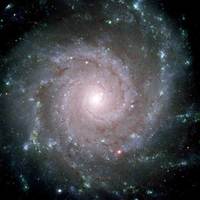

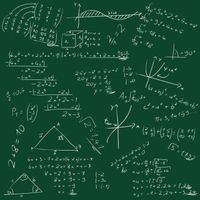
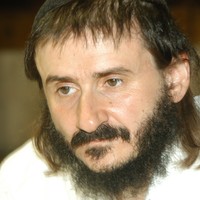
Uploads
Papers by Christian Miniatura